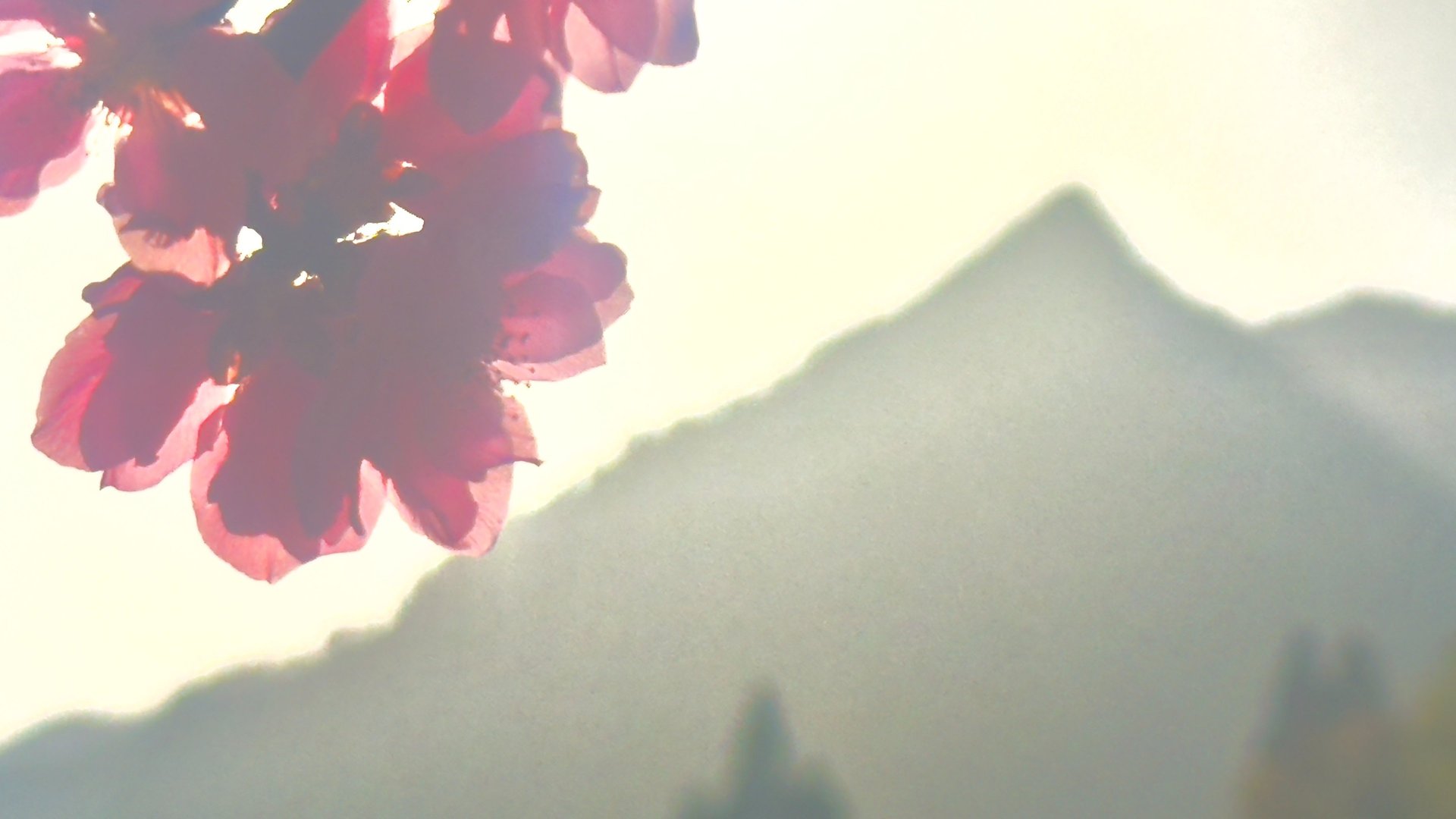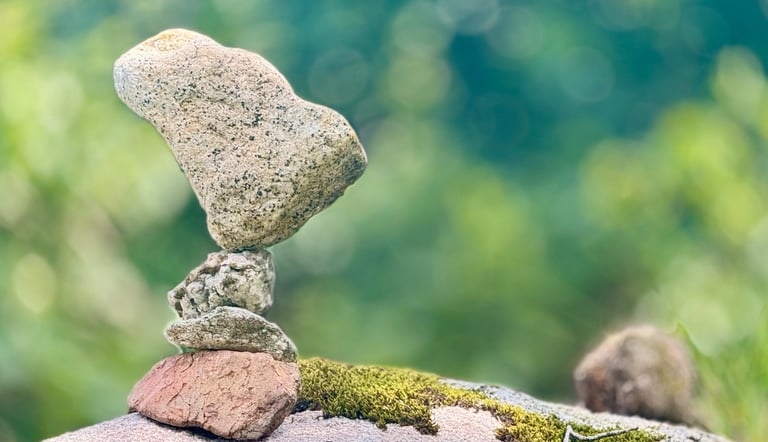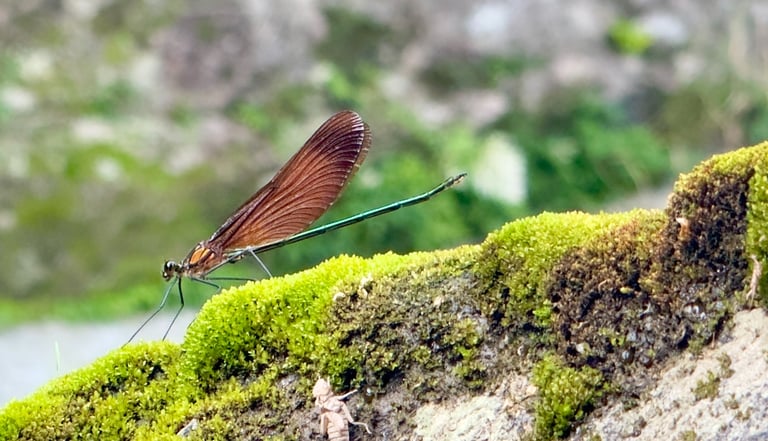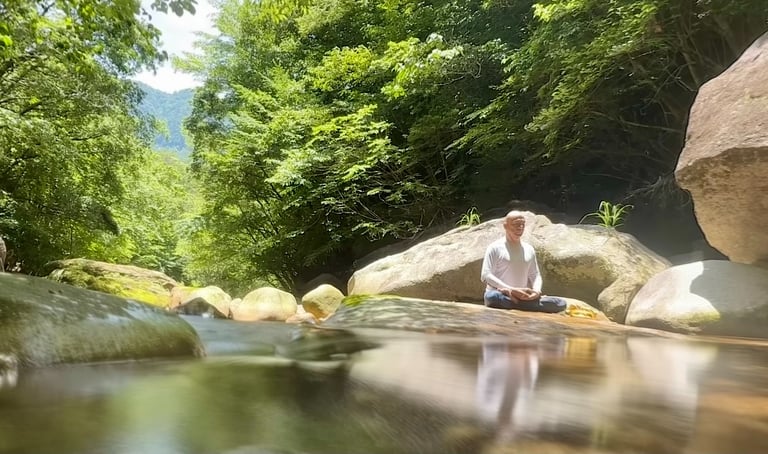
Zen Nature
Japan from the silent mind
Unlocking the Secrets of Japans Natural Harmony with the Simplicity of Zen
How cultivating mindfulness in nature helps us feel more connected and evokes gratitude and wonder.
There is a place where moss-covered boulders balance in impossible harmony, where ancient streams whisper the same koans they’ve spoken for millennia, where a single damselfly’s wings catch light like stained glass in a cathedral made of green. This is not a place you find on any map—it is a place that finds you when you’re ready to listen with more than your ears.
The Stone That Remembers
In the heart of Japan’s sacred mountains, where cedar and maple create living temples, I discovered what the old masters knew: enlightenment isn’t something you achieve, it’s something you remember. Walking these hidden paths, breathing with the rhythm of water over stone, I understood why the ancient ones said “The pine teaches silence, the rock teaches stillness, the stream teaches the way.”
Here, in these secret sanctuaries, stones have been balancing for centuries—not by human hands, but by the patient choreography of water, wind, and time. Each precarious arrangement is a meditation in physics, a lesson in the delicate dance between effort and surrender that defines all existence.
The moss grows in patterns that would make zen masters weep with recognition. Every surface breathes with the slow, patient rhythm of centuries. This is where you learn that breathing isn’t just something you do—it’s something you participate in, like joining an ancient conversation that began before words were invented.
The Dragonfly’s Teaching
Yesterday, sitting beside a pool where sunlight fractured into ten thousand diamonds, I watched a damselfly land on a boulder covered in velvet moss. Its wings, translucent as a meditation master’s thoughts, caught the light in a way that made time stop. For a moment, I wasn’t watching the damselfly—I was the damselfly, I was the moss, I was the light itself.
This is what happens when you breathe with the forest instead of simply breathing in it. The boundaries between observer and observed dissolve like morning mist. The damselfly’s wings become your wings, the stone’s stillness becomes your stillness, the stream’s flow becomes your flow.
The Buddha spoke of this in the Lotus Sutra: “The true aspect of all phenomena is beyond birth and death, beyond coming and going.” Here, in these sacred groves, you don’t just understand these words—you become them.
The River’s Circular Teaching
Water has been my greatest teacher on these mountain paths. Watch how it flows—never forcing, never resisting, always finding the way. When it encounters a boulder, it doesn’t argue with the stone or try to convince it to move. It simply flows around, over, under, through whatever opening presents itself.
This is the secret of circular breathing that the ancient masters discovered. Like water, the breath doesn’t pause between inhale and exhale—it flows in continuous circles, connecting you to the endless circulation of life force that animates everything from the smallest moss to the mightiest cedar.
Sitting by these streams, practicing the breathing that has no beginning and no end, you begin to understand what the old texts mean when they say “Form is emptiness, emptiness is form.” The water is both substance and space, both movement and stillness, both sound and silence.
The Teaching of Balanced Stones
In these hidden valleys, you’ll find stones balanced in ways that seem to defy gravity—three, four, sometimes five rocks creating sculptures that appear impossible. Local masters say these formations appear when the mountain itself is in deep meditation, when the very earth breathes so slowly that stones can rest in perfect equilibrium.
This is the teaching of ma—the sacred space between things. It’s not empty space, but pregnant space, alive space, the space where possibility lives. When you breathe with awareness of this space—the pause between inhale and exhale, the silence between thoughts—you discover that this is where your true nature resides.
The stones teach patience. The moss teaches persistence. The stream teaches flow. But the space between them teaches the greatest lesson of all: that what appears to be separate is actually one seamless whole, breathing together in perfect harmony.
The Cicada’s Dharma
In high summer, when the green is so intense it seems to pulse with its own heartbeat, the cicadas join the symphony. Their humming becomes a mantra, a reminder that all of nature is continuously chanting the name of the nameless.
Sitting in meditation beside these sacred streams, the cicadas’ song becomes your song, their rhythm becomes your rhythm. You realize that every creature is participating in the same cosmic breathing practice, each finding their unique way to express the universal life force.
The Japanese have a word—*mono no aware*—the bittersweet awareness of the impermanence of all things. But here, breathing with the eternal rhythm of water and stone, you discover something deeper: that impermanence itself is permanent, that change itself is unchanging, that the very transience of each moment is what makes it eternal.
The Waterfall’s Meditation
In the most sacred of these hidden places, water falls from heights that make your spirit soar. The sound is not just heard but felt—a percussion that resonates in your bones, a rhythm that synchronizes with your heartbeat until you can’t tell where the waterfall ends and you begin.
Standing in the mist of these falls, practicing the breathing that connects heaven and earth, you understand why the ancient masters chose such places for their deepest realizations. The falling water is like the breath itself—always moving, always changing, yet always essentially the same.
The mist on your face is the same moisture that will become clouds, rain, streams, and eventually return to the sea. You are part of this endless circulation, this cosmic breathing of water and air, earth and sky. Your breath is the thread that weaves you into the infinite tapestry of existence.
The sound of the valley stream
is the Buddha’s long tongue;
The form of the mountain
is nothing other than the pure body.
— Dōgen, from the Shōbōgenzō (“Sounds of the Valley Streams, Forms of the Mountains”)
The Teaching of Morning Light
At dawn, when the first light filters through the canopy to dance on moss and stone, the forest becomes a living mandala. Each ray of sunlight is a line in a cosmic geometry, each shadow a sacred space, each reflection on water a doorway to understanding.
This is when you learn that seeing is a form of breathing—taking in the light, letting it illuminate the inner landscape, exhaling gratitude for the privilege of witnessing such beauty. The eyes become lungs, the lungs become eyes, and the boundary between inner and outer vision dissolves.
The morning light teaches you that consciousness itself is like sunlight—not something you possess, but something you participate in. Just as the sun doesn’t choose which flowers to illuminate, awareness doesn’t choose which thoughts to notice. It simply shines, and everything is revealed in its light.
The Integration of Sacred and Ordinary
These hidden places teach you that the sacred isn’t separate from the ordinary—it’s the ordinary seen with clear eyes, breathed with a conscious heart. The same awareness that recognizes the Buddha nature in a moss-covered stone recognizes it in a busy street, a crying child, a difficult conversation.
The stream that teaches patience in the mountains continues its teaching in the city rivers. The balance learned from stacked stones applies to the balance needed in daily life. The breathing that connects you to the forest connects you to every moment, every person, every situation you encounter.
This is the true teaching of these sacred places: not to escape the world, but to see it clearly. Not to transcend humanity, but to fully embody it. Not to stop breathing, but to breathe with such awareness that every breath becomes a prayer, every moment a meditation, every step a pilgrimage.
The Invitation of the Moss
As I write this, sitting beside a stream where water has been flowing for thousands of years, the moss-covered boulder beside me seems to pulse with patient wisdom. It has been here through countless seasons, countless storms, countless moments of human seeking and finding.
The moss grows slowly, incrementally, creating beauty through the simple persistence of being present. This is the teaching it offers: that transformation doesn’t require dramatic gestures or spectacular insights. It requires only the willingness to be present, moment by moment, breath by breath, to the unfolding miracle of existence.
The dragonfly that lands on my hand as I write these words brings the same message. Its wings, so fragile they seem made of light itself, carry it effortlessly through the air. It doesn’t struggle against the wind or fight the current of air—it dances with it, finding lift in surrender, finding strength in flexibility.
This is the teaching of the breath: not to control the flow of life, but to flow with it. Not to force outcomes, but to trust the process. Not to grasp at enlightenment, but to recognize it in each conscious breath, each moment of presence, each recognition of the seamless unity that has always been here, waiting for us to remember.
The forest breathes. The stream breathes. The stones breathe with the slow rhythm of geological time. And you—you breathe with all of them, part of the same cosmic respiration that animates all existence.
What does your breath reveal to you in this moment? What sacred teaching is waiting in the space between your inhale and exhale? What ancient wisdom is speaking through the rhythm of your own heart?
The forest is waiting. The stones are balanced. The stream is flowing. And your breath is the bridge that connects you to all of it, now and always.
The way is not in the sky. The way is in the heart.








